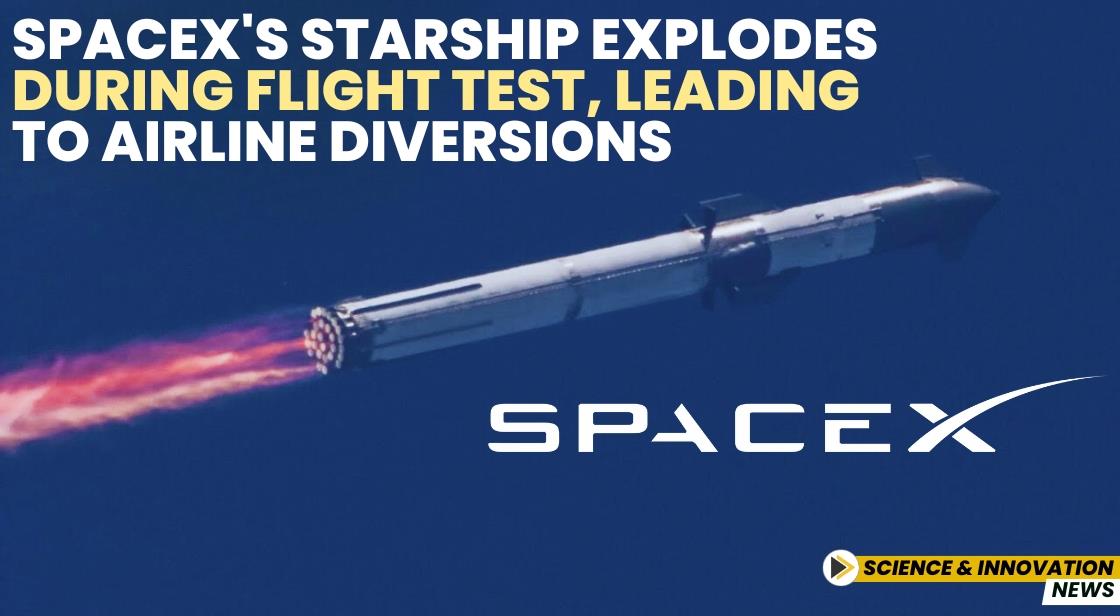SpaceX's Starship Explodes During Flight Test, Leading to Airline Diversions

News Synopsis
SpaceX’s Starship rocket suffered a significant failure during its test flight on Thursday, breaking up in space shortly after launching from Texas. This unexpected event forced commercial flights over the Gulf of Mexico to alter their course to avoid falling debris, creating a ripple effect on air traffic. The explosion has also set back Elon Musk’s ambitious plans for the rocket program.
The Launch and Communication Loss:
The Starship rocket, carrying its first test payload of mock satellites and no crew, launched from SpaceX's South Texas facility at 5:38 p.m. EST (2238 GMT). However, just eight minutes after liftoff, SpaceX mission control lost contact with the rocket. Communication failure indicated a problem with the rocket’s upper stage, and it was later confirmed that the Starship had been lost.
Visible Aftermath:
As the rocket broke apart in space, video footage captured by Reuters showed a series of orange balls of light streaking across the sky, leaving trails of smoke. These lights were visible over the Haitian capital, Port-au-Prince. The sight of the breakup highlighted the severity of the incident and drew attention worldwide.
Disruption to Air Traffic:
The explosion caused widespread disruptions to air traffic in the region. According to flight tracking website FlightRadar24, dozens of commercial flights were diverted to other airports, while several others altered their course to avoid potential debris. Departures from Miami and Fort Lauderdale, Florida, were delayed by approximately 45 minutes as a precautionary measure.
FAA’s Response to the Mishap:
The Federal Aviation Administration (FAA), responsible for regulating private space launches, temporarily slowed and diverted planes from the area where space debris was falling. However, the FAA confirmed that normal air traffic operations resumed shortly thereafter. Typically, the FAA closes airspace for space launches and reentries, but it can also establish a "debris response area" to prevent aircraft from entering the affected zone if the space vehicle experiences anomalies outside the initial exclusion zone.
SpaceX CEO’s Reaction:
SpaceX CEO Elon Musk posted a video on X (formerly Twitter) showing the debris field from the Starship’s failure. In his usual optimistic manner, Musk commented, “Success is uncertain, but entertainment is guaranteed!” His lighthearted remark seemed to downplay the severity of the mishap, but the failure still had far-reaching implications for the Starship program.
Starship’s Upgraded Design:
The Starship rocket’s upper stage, which was two meters taller than previous versions, was billed as a “new generation ship with significant upgrades” by SpaceX prior to the test. The aim was for the rocket to make a controlled splashdown in the Indian Ocean roughly an hour after launch. However, the mission ended in failure due to a suspected internal leak of liquid oxygen fuel that caused a buildup of pressure, resulting in the breakup of the rocket mid-flight.
FAA Investigation and Setbacks for SpaceX:
Following the mishap, the FAA is likely to open a formal investigation to determine the cause of the failure. The agency will also examine if any debris from the explosion fell on populated areas or outside the predetermined hazard zone. This investigation could potentially ground the Starship program, as has happened in the past with other SpaceX mishaps. Musk's ambitious plan for 12 Starship tests this year could be delayed depending on the outcome of this investigation and how quickly SpaceX can implement fixes.
Starship’s Progress and Testing Approach:
This incident marked SpaceX’s seventh Starship test since 2023. Despite failures, the company’s aggressive testing approach has been pivotal in advancing the development of its Starship rockets. Musk has long followed a test-to-failure methodology, where prototypes are pushed to their engineering limits. The failed mission on Thursday occurred during a phase of the mission that SpaceX had previously completed successfully.
Super Heavy Booster’s Successful Return:
While the Starship rocket’s flight was unsuccessful, SpaceX’s Super Heavy booster had a much more successful outcome. The booster returned to its launch pad around seven minutes after liftoff as planned. It slowed its descent by reigniting its Raptor engines and attached itself to a launch tower using giant mechanical arms, successfully completing its part of the mission.
Conclusion:
The explosion of the SpaceX Starship during its test flight on Thursday is a significant setback for the company’s plans to develop the rocket for future missions, including ferrying humans to Mars and deploying satellites. Despite the failure, SpaceX continues to push forward with its ambitious testing program, remaining hopeful that future missions will yield better results.
You May Like









